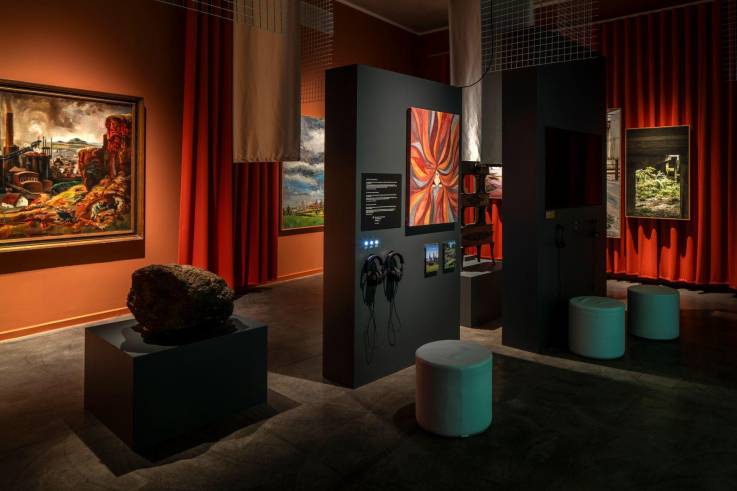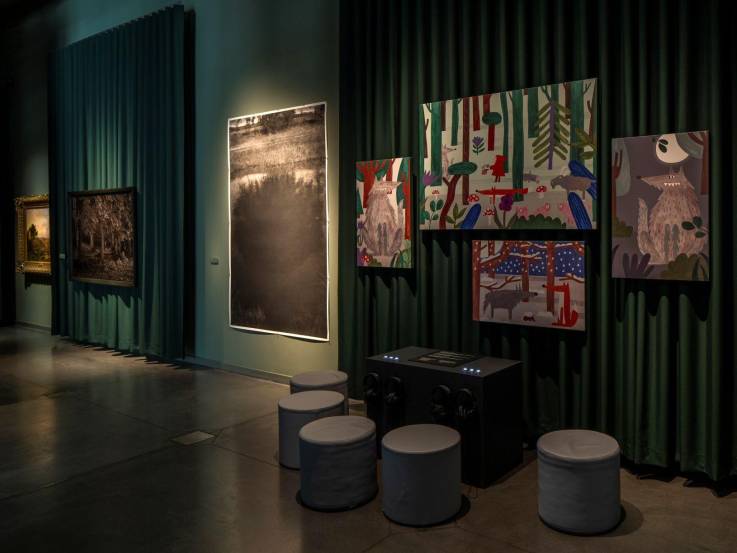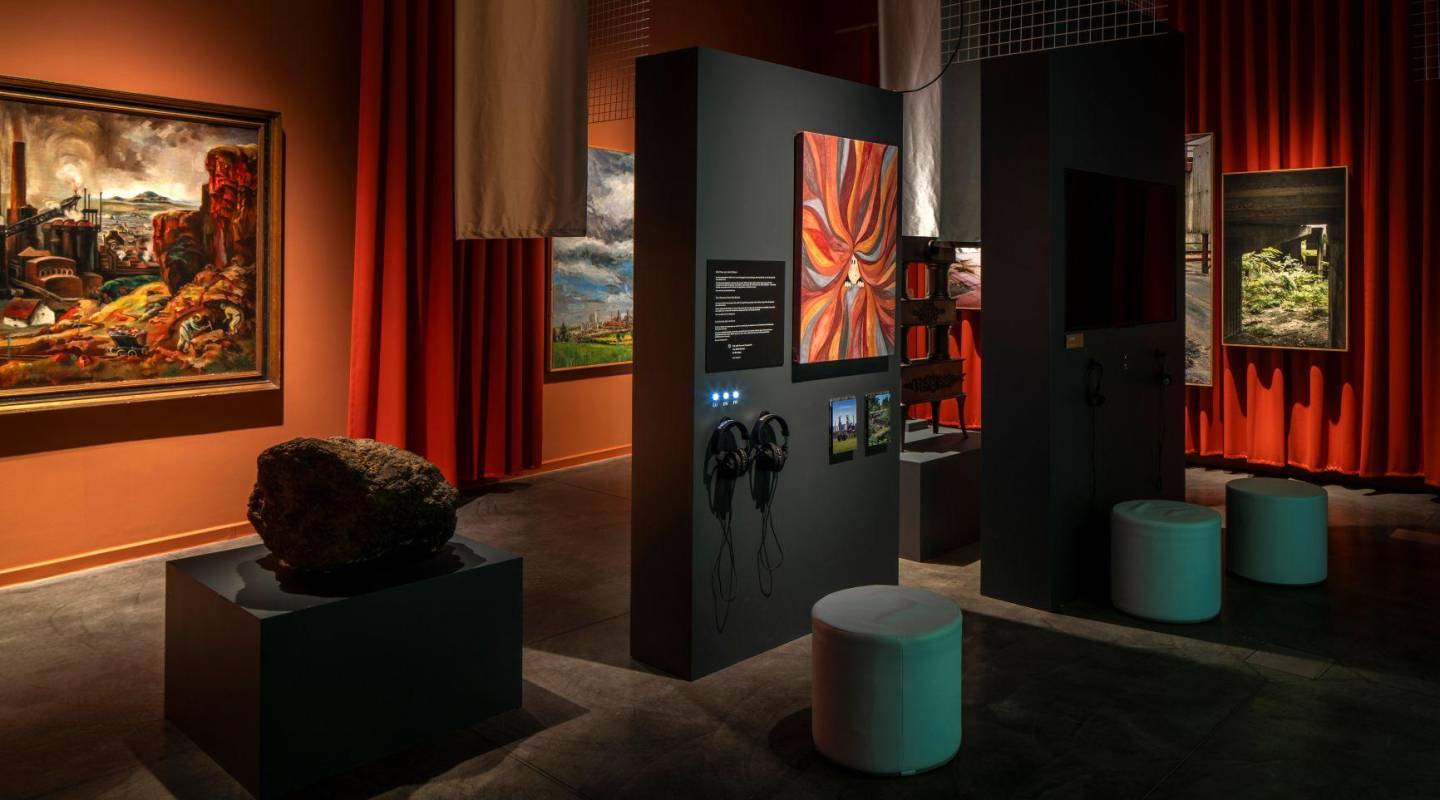Land in Motion, our exhibition about how people and landscapes have shaped each other throughout the centuries, was a first in many respects.
It was organised as part of Luxembourg Urban Garden (LUGA), the first temporary open-air exhibition of its kind in Luxembourg. It also brought together a wide range of expertise, with our archaeologists, historians, archivists and art historians working collaboratively to select the objects and artworks on display, develop content and shape the overarching narrative.
In addition to putting together an extensive programme of events and activities to accompany the exhibition, the team also created a bespoke children’s itinerary designed to fit seamlessly into the scenography of the show. This was another first for the museum and marks a significant step towards making our exhibitions more inclusive and engaging for younger audiences.

Children’s itinerary and guide
The children’s itinerary was developed as a parallel journey through the exhibition, offering young visitors their own path to explore how humans and nature have influenced each other throughout history. The museum collaborated with a local illustrator, Lynn Cosyn, whose charming, nature-inspired drawings were created specifically for the exhibition space. These illustrations helped bring the content to life, making it visually appealing and accessible.
At the heart of the itinerary are audio stations featuring original stories written and narrated by Luxembourgish children’s author Marc Weydert. These stories address the key themes of the show – forests, rivers, agriculture and industry –, offering a new take on local legends. Rather than presenting familiar characters like the big bad wolf as onedimensional villains, the stories invite children to reconsider these figures and explore more nuanced perspectives. They also reflect changing attitudes towards the environment: the wolf is presented as an endangered species rather than our enemy out in the woods, and the Kropemann is reimagined as a guardian of the precious resource that is water. This approach encourages critical thinking and empathy, helping younger audiences to engage with the exhibition’s themes in a meaningful way.
Throughout the exhibition, children encounter various stations designed to spark creativity and curiosity. They can read a gnome-themed newspaper, draw their own version of a local water spirit called the Kropemann, reflect on how the mining industry shaped our landscape and interact with tactile elements that encourage exploration and participation. These stations offer different ways into the content, allowing young visitors to engage with the exhibition on their own terms. Everything is available in three different languages, ensuring that families from different backgrounds can enjoy the experience together.
Accompanying the itinerary is a beautifully illustrated guide filled with activities that invite children to think, play and create. They can draw landscapes and characters, find their way through mazes, spot differences between images, match tools to types of soil and answer quiz questions that prompt reflection on climate change and human impact. Other activities encourage them to search for specific objects within the exhibition, making the experience both fun and educational. All materials are provided free of charge, pencil included.

A message for the future
The children’s itinerary and guide also convey an important environmental message. Through storytelling and interactive elements, young visitors are introduced to the idea that ecosystems are fragile and that our relationship with nature needs to be rethought. In the section on agriculture, for instance, the effects of climate change on crop yields are explored through the lens of gnomes, who in fairy tales often help farmers in the fields. This imaginative framing makes complex issues more relatable and helps children understand the importance of sustainability and care for the environment.
This experience for children was designed to offer a playful yet thoughtful way into the themes explored in Land in Motion. By engaging young visitors through storytelling, illustration and hands-on activities, the museum hopes to inspire a deeper understanding of how humans and landscapes have influenced one another over time, and to encourage future generations to build a more sustainable relationship with the natural world.
Text: Katja Taylor - Photos: Éric Chenal
Source: MuseoMag N° IV - 2025
